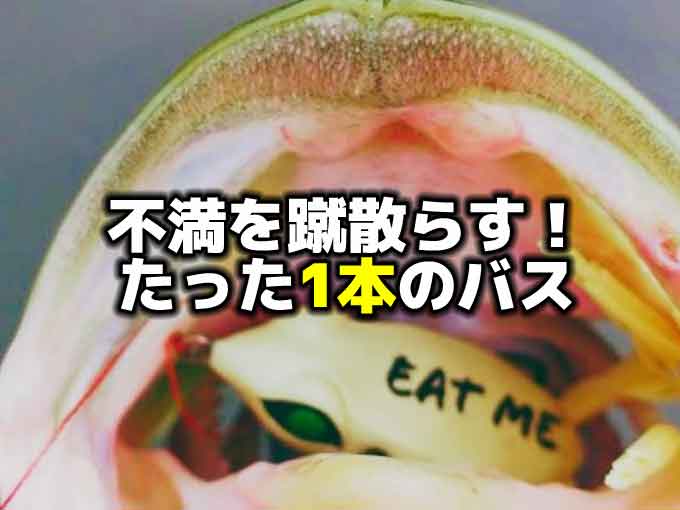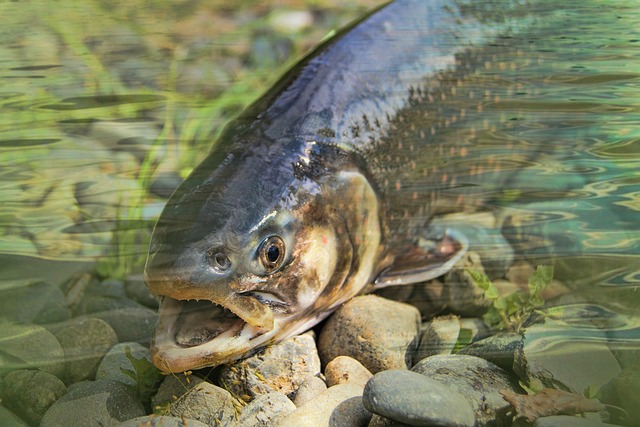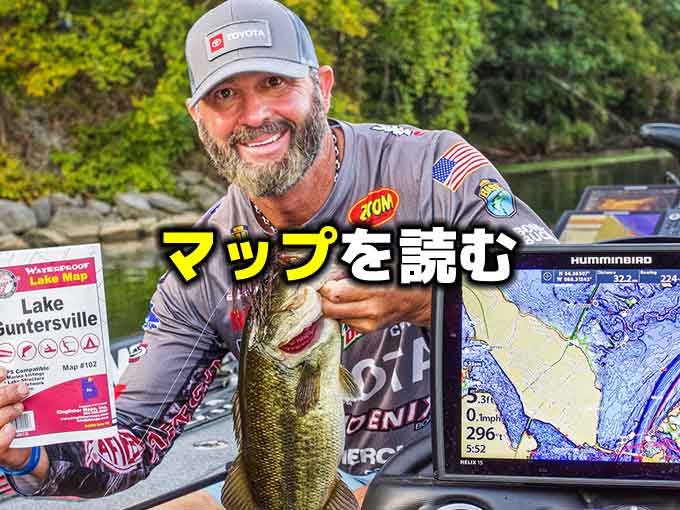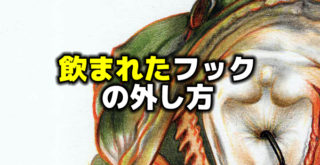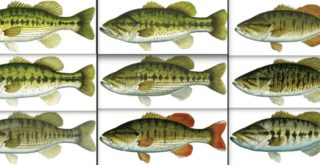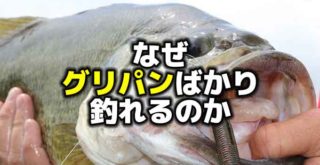デカいバスを釣るために

Photo by bassmaster.com
こんにちは!店長の小山です!
本日は海外サイトより、”So, you want to catch a trophy bass?”という記事を引用してご紹介いたします。
引用先:bassmaster.com”So, you want to catch a trophy bass?”by Jody Only November 16, 2018(海外サイトです)
デカいバスを釣りたい。これは、バス釣りをしている人であればだれでも願うことだと思います。
とりあえず、釣れればいいです。釣れればそれでいいのですが、釣れたら釣れたで、今度はもっと大きいのが釣りたくなりますよね。人間、無欲なようでも、やはり理想というものはあるものです。でも、その理想を追い求めることについてはなにも間違いはないと思います。
では、デカいバスとはどういうものか。
これは人によってまちまちです。その人によって「でかい」の基準は違ってくるので押し付けがましい話になってはいけないのですが、昔からよく言われる基準としては50アップのことをランカーと呼ばれていまして、これがひとつの目標となります。
昔はそれほど存在していませんでしたが、今となっては60アップを目標にすることも多くなってきました。ロクマルクラスを釣らないと満足できないという方も多いほどです。
その上となると、10パウンダーと言われるバスがいます。長さではなく、重さ。10ポンド以上のバスのことを10(テン)パウンダーと呼び、これも昔からバスアングラーの夢として目標とされています。ちなみに10ポンドとは約4.5キロですので、1.5リットルのペットボトル3本分のバスですか…、とんでもないですよね(笑)
私はひとまず60センチのバスを釣ったことがありますので、今現在の目標は一応10パウンダーと設定していますが、とてもじゃありませんが釣れる気がしません。まさに夢のサイズです。
しかしながら、世に出ているバス釣りの釣果情報などを見て回ると、10パウンダーを釣る人というのは、よく10パウンダーを釣っています。デカいバスをよく釣る人というのは、デカいバスをよく釣っているんですよね。ちょっと意味が分かりませんが(笑)、そういうことなんです。
デカいバスを釣る人にだけ分かる、何かがあるのだと思います。
この記事は、アメリカバスマスターサイトの記事で、記者のジョディ・オンリー氏が、バスフィッシングガイドのジョン・リッチ―氏に取材したものを共有してくれています。
今日のテーマはちょうどその10パウンダーのようです。
おそらく多くの皆さんが夢見るサイズ、10パウンダーの釣り方の例というものを実際に読んでみたいと思います。
それぞれの日に、それぞれの10パウンダー
John Liechty, a northern California fishing guide, is one angler who has racked up an impressive list of double-digit catches. To close out 2017, Liechty notched another double on his belt with a jaw-dropping 15.19 largemouth at New Melones Lake, California on November 15.
Yes, locating, hooking and landing a teener of any size is an impressive feat; however, to make this catch even more amazing, Liechty did it on 4-pound test. Yep, a 15-pound bass on 4-pound test!
And no, it isn’t the first time he landed a lunker largemouth on the lightest of lines. His personal best, a 17-pound, 4-ounce largemouth caught on April 6, 2012, also at Melones, tested his light-line prowess with 8-pound test.
If you’re like me, you wonder what his secret is to finessing teeners on the tiniest pound test. I asked, and Liechty didn’t hold back.
カリフォルニア州北部のフィッシングガイドであるジョン・リッチ―は、立派な10パウンダーをキャッチしたアングラーの中のひとりです。 2017年の締めくくりとして、リッチ―は11月15日にカリフォルニアのニューメロンズレイクで15ポンド19オンスという驚愕のラージマウスを釣り上げ、彼はまたひとつ、やってくれました。
まあ、10パウンダーを探し出し、フッキングに持ち込み、ランディングするのはいつだって印象的な偉業となります。 しかし、このキャッチについてはさらに驚くべきことに、リッチ―は4ポンドのラインで釣ったのです。 そう、4ポンドラインで15ポンドのバスです!
そしてまた、彼がライトラインでランカーのラージマウスを釣ったのはそれが初めてではないのです。 2012年4月6日にメロンズレイクでキャッチした彼の自己記録となる17ポンド4オンスのラージマウスは、8ポンドのラインを試した時だったのです。
私もそうですが、みなさんも彼がどんな秘密をもってそんな細いラインで10パウンダーを釣ったのか気になるのではないかと思います。 私がそれについて尋ねたところ、リッチ―は包み隠さず教えてくれました。
確率の高いターゲット
First on the list of his big-bass goals is maximizing his opportunity to catch one by targeting areas that are conducive to holding a fish of a larger class.
“You can’t get a big one to eat your bait if you’re not putting it where a big one can find your bait,” explained Liechty.
He described prime real estate for big bass as areas with good cover and good structure.
“What I mean by the structure is the contour of the lake,” he explained further. “The big ones live in deep water and feed in shallower water; so deep-water areas with adjacent shallow water are perfect lake features.”
Examples of this include intersections, bluffs or points that stick out in the lake; an island in the middle of a creek channel; or other areas that have multiple factors that are attractive for bass.
彼がビッグバスを目標としたときのリストのまずはじめは、よりビッグサイズの魚がいるであろうエリアをターゲットにして、キャッチのチャンスを最大限にすることです。
「ビッグバスがルアーを見つけることができる場所にいなければ、ルアーを食べることができません」とリッチ―は説明します。
彼はビッグバスの居場所とは本当に良いカバーとストラクチャーのあるエリアだと説明します。
「ストラクチャーが意味するものとは、湖の等深線(地形変化)のことです。 ビッグバスはディープに住み、シャローで餌を食べます。 ディープが隣接するシャローは湖のなかでも完璧な特徴です。」
例としては、湖のインターセクション、崖、岬、クリークチャンネルの真ん中にある島など、バスにとって複数の魅力的な要因を持つエリアになります。
バスの行動に連動させる
Good cover is anything that offers a place for a bass to hide and ambush prey — any kind of wood, rock, vegetation, docks, pilings, etc.
Liechty uses the good structure/good cover combo to capitalize on bass behavior.
“Hiding places or ambush points give the bass an advantage, and when they feel they have an advantage, they can get arrogant, and those are the fish that bite,” he said. “Bass are creatures of habit, and they work on a risk/reward type of mentality; so, if they have successfully filled their bellies in a certain area or on a certain structure type, they will continue to frequent the area for a meal. If there is a certain island top that they consistently get a rainbow trout on, they will sit nearby, and when they feel the desire to fill their belly, they will move up and pick out another rainbow trout.”
良いカバーとは、木、岩、ベジテーション、桟橋、杭などバスが隠れてエサを待ち伏せできるものがあればどんな場所でも結構です。
リッチ―はバスの活動を利用するために、良いストラクチャー(地形変化)と良いカバーの組み合わせを使用します。
「隠れ場所や待ち伏せポイントはバスを有利にしますが、バスは自分が有利だと感じると強気になるクセがあり、そういう魚はバイトしてくる魚なのです。 バスは習慣の生き物であり、リスクとリターンのメンタリティを持っています。 彼らが特定のエリアや特定の地形でうまく腹を満たしているのならば、彼らは食事のためにそのエリアに頻繁に出入りします。 彼らがコンスタントにニジマスが着くハンプトップを見つけると、近くに居座り、お腹が空くと、ハンプトップに移動してニジマスを食べるでしょう。」
ステルスモード
Once the high-percentage target has been determined, Liechty suggests using a “stalking mentality” to access the area. As he nears his target, his approach becomes slower and slower, turning the trolling motor further and further down, the closer he gets. He ensures his ultra-quiet entrance by taking an average of one full minute to slowly approach for the perfect setup prior to the first cast.
“Opening and closing lids, clicking and stomping, even foot tapping sends a pulse through the water [even deep water] that will lessen the chance of catching a giant bass,” he advised. “Your noise will let them know you’re there and once they know you’re there, their mood to feed [or feed aggressively] instantly changes.
“Bass get trained — they get trained to the big motor sound, the wake crashing on their point and an artificial lure that comes splashing in. You can catch some fish with that approach; but again, the big ones don’t get to be big ones by getting caught, and a stealthy, hunting mentality is a huge factor in catching the big fish.”
When Liechty is ready to make the first cast, he considers the angle that would give the bass the best advantage over their prey, putting his bait in an area that he thinks would give the bass the feeling that it’s trapping its meal.
If that doesn’t bring a bite, he may leave, letting the area rest, and return at a later time to continue experimenting with a different approach or a different lure.
釣れる割合の高いターゲットを見つけたら、リッチーはそのエリアに近付くには「ストーカー・メンタリティ」を使用することを提案します。 彼はターゲットとなるエリアにボートで近づくにつれて、アプローチはより遅くさらに遅くなり、エレキをかなり遠くから降ろし、接近していきます。 彼は完璧なお膳立てをするために最初のキャストの前に1分ほど時間を取り、ゆっくりとアプローチして、非常に静かに近づくことを確実にしています。
「(ボートデッキの)蓋を開けたり閉めたり、音を立てたりずかずか歩いたりすると、たとえディープエリアであっても巨大なバスをキャッチするチャンスを減らしてしまう信号を送ることになってしまいます。あなたの立てる騒音は、あなたがそこにいることをバスに知らせ、あなたがそこにいることを知ったら、フィーディングする気分[または積極的にフィーディングする気分]が即座に変化してしまいます。」
「バスは、大きなエンジン音、岬に打ち付ける引き波や人工的なルアーのアクションに訓練を受けているのです。そのアプローチでもいくつかの魚をキャッチすることはできます。 しかしやはり、ビッグバスというのはキャッチされていないからビッグバスになるもので、ステルスハンティングの精神はビッグフィッシュをキャッチする大きな要因となります。」
リッチ―は最初のキャストを行う準備ができると、バスがフィーディングするうえでバスが最も有利になるであろう角度を考えます。そして、バスがその獲物を追い込んでいると感じさせるようにルアーを通していきます。
それでバイトが起こらなければ、彼はそのポイントを休ませて、また後で戻って別のアプローチやルアーで実験を続けるようにしています。
好奇心のないバスに対するルアー選択
Liechty believes that the larger class of bass aren’t that curious — that the biggest bass get to be the biggest bass by specifically not being curious. Due to their lack of inquisitive interest in a lure, Liechty feels that a lifelike presentation and natural appearance are required of a lure for a big bass to fall to their feeding instinct.
“It just takes a lot to fool a fish of that size, so you want your bait to be an imitation of something that they have successfully fed on throughout their entire lifetime,” he said. “I learned about matching the hatch from fly fishing. If the fish were consistently eating grasshoppers, you threw something that looked like a grasshopper.
“It is the same with bass fishing. If they’re feeding on 2-inch shad, I’m going to throw a bait that looks like a 2-inch shad versus throwing a bluegill. On the same token, if they’re feeding near laydowns or bluegill spawning flats, I will switch to something that has the coloring and the profile of a bluegill.”
リッチーは、大きなバスにはそれほど好奇心がないと考えています。最も大きくなるバスというのは、好奇心を持たないことによって最も大きなバスとなったはずです。ルアーに対する興味を持たないため、本当に生き生きとしたプレゼンテーションと自然な外観がビッグバスの本能に訴えるのには必要なのだとリッチーは感じています。
「それだけの大きさの魚をだますには多くの時間がかかるので、彼らがここまで生きてきた中でたくさん食べてきたものを模倣するのが良いと思います。 」と彼は言います。「私はフライフィッシングのマッチザハッチについて学んできました。魚がコンスタントにバッタを食べているのだとしたら、バッタっぽいものを投げてきました。」
「バス釣りも同じです。もし彼らが2インチのシャッドを食べているなら、私はブルーギルっぽいものではなく2インチのシャッドのようなルアーを投げるつもりです。同様に、彼らがレイダウンやブルーギルのスポーニングフラットの近くでブルーギルを食べている場合は、ブルーギルのカラーや形を持つものに切り替えるつもりです。」
細いラインは運次第ではないのか?
A fourth-generation angler, Liechty, 37, grew up fishing New Melones in northern California. He worked as a fishing guide from the age of 16, putting in 14 years exclusively as a fly fisherman. For the past four years, he has been a bass fishing guide on the lake.
He believes his success in light-line trophy catches is built on his fly fishing foundation. This foundation supports his theory that small-diameter line greatly increases lure action that heavier line simply cannot offer.
“If you tie a 2-inch fluke — like the one I used on the 15-pounder — to 10-pound line and give it a little shake, that is all it is — it is just a little shake; but if you tie it on 4-pound line, it quivers with a lot more motion,” he said. “Light line makes all the difference in a lure’s presentation, and the presentation is what tempts the bass to bite. You simply can’t land one if you can’t make it bite.”
You would smile, too, if you just landed a 15-pounder. John Liechty has another reason for the Cheshire grin, as he landed this giant on line just a little thicker than human hair.
リッチーというアングラー(37歳)は、カリフォルニア北部のニューメロンズレイクで釣りをして育ってきました。 16歳からフィッシングガイドとして働き、フライフィッシングアングラーとして14年間勤めてきました。ここ4年間で、彼は湖のバスフィッシングガイドをしています。
彼がライトラインでビッグバスをキャッチしてきたのに、彼のフライフィッシングの基礎が関係していると考えています。この基盤は、細いラインが太いラインではできないルアーアクションを大幅に増加させるという彼の理論に基づいています。
「私が釣った15パウンダーのバスに、2インチのフルークを10ポンドラインに結んでシェイクしたとしたら、それはちょっとしたシェイクです。しかし、4ポンドラインにそれを結べば、それはより多くのシェイクアクションを起こします。 ライトラインはルアーのプレゼンテーションに多くの違いを生み出し、プレゼンテーションとはバスのバイトを誘うものです。まずバイトさせることができなければ、もはやランディングさせることなどできません。」
15ポンドのバスをランディングしたら、そうれはもう笑顔になるでしょう。 ジョン・リッチ―が笑顔になるもう一つの理由は、人間の髪の毛より少し太いラインでこのジャイアントバスを釣ったところにあります。
フィネスラインでバスとのファイトを制するには
For John Liechty, the benefits of light line outweigh the risks; however, it is not a presentation for the faint of heart. Liechty has mastered the light-line fight, and with these tips, maybe you can, too.
“Fighting a fish on light line is all in the hands of the angler,” he elaborated. “Barring no interference from cover [wood, rock, etc.], as long as you use high-quality line and your knots are good, your line just doesn’t break. You are in control of it, and there is no reason to break off. If a line breaks in open water, it is because the angler applied too much pressure.”
He explained a light-line fight is all about give and take — having the right gear and knowing the gear. A rod with less backbone and a good parabolic bend deeper into the rod will work as a shock absorber and help with the fight.
“I also use a fly fishing technique of feathering the spool,” he added. “I adjust my drag so that it’s fairly loose. When the fish pulls, the reel starts screaming and the line pulls off effortlessly, pulling drag without breaking. When the fish slows down or I feel there is an opportunity to stop the fish, instead of tightening the drag, I apply pressure by cupping my hand over it.”
His hand-feathering provides tension on the spool without working the mechanics of the drag and leaves him ready to immediately release pressure with his hand if the fish starts surging.
“Between surges, when the fish rests or is just wallowing, I pick up line,” he said. “I will tighten the line a click or two when I feel I can gain on [it], but if I can see by [its] behavior [it’s] getting hot again, I will go back to hand-feathering the spool.”
He combats fish jumps by “hanging on for dear life” but tries to prevent the situation altogether.
“You cannot really stop the first jump, but sometimes you can talk them out of it with the rod tip down and the line in the water, just really switching a lot of angles as they move,” he said.
If a jump does occur, he opts for a neutral stance. He ceases attempts to gain on the bass by relaxing some of the bend in the rod, lessening the tension on the bass and decreasing the chance of a jump.
“It is a fine line when lightening up on the pressure,” he said. “You only want to let the bend go slightly, not enough to cause slack line.”
He will also “chase the bass” with the trolling motor, using a quick speed and staying on top of its position, giving with the surges and reeling in as it comes up.
“A lot of times, when you land a big bass, it is because [it goes] straight to deep water, and that is what you want them to do,” he added. “If they go shallow, there are many things that can break you off. When they scream their way out to the lake, staying close to them makes it easier to get your line in, and you have to get all of the line in to get the bass in the boat.”
ジョン・リッチ―の場合、ライトラインのメリットはリスクを上回ります。しかし、それは心臓に悪いプレゼンテーションではありません。 リッチーはライトラインでの戦いをマスターしており、これらのヒントを使えば、みなさんにもできるはずです。
「細いラインで魚とファイトすることは、すべてアングラーの手にかかっています。高品質のラインを使用し、ノットがちゃんとしていれば、カバー(ウッド、岩など)にでも触れない限り、ラインブレイクすることはありません。これはコントロールすることができ、ラインブレイクする理由がありません。オープンウォーターでラインブレイクしてしまうのは、アングラー側があまりにも多くの圧力をかけてしまったからです。」
彼は、ライトラインでのファイトは、正しい道具を知り、正しい道具を使うギブアンドテイクだと説明します。バットが弱く、よく曲がるロッドはショックアブソーバーとして働くため、ファイトの助けになります。
「私はまた、スプールをフェザリングするフライフィッシングの技術を使用しています。 私はドラグ調整をかなり緩めに調整しています。魚が引っ張ると、リールは音を鳴らし始め、ラインは簡単に引き出され、切れることなくドラグが出ていきます。魚の動きが遅くなったり、魚が止まったと感じたら、ドラグを締めるのではなく、手で押さえて圧力をかけるのです。」
彼のハンドフェザリングはドラグの仕組みを使わずにスプールにテンションを掛け、魚が急に動き始めたら直ちに手での圧力を解放する準備を整えています。
「急な動きの中でも、魚が止まったり、もがいている時に、ラインを巻取ります。 「これはいけるな」と思ったときには少しずつドラグを締めてラインテンションを掛けていきますが、私のその行動によって魚が再び暴れ出すようであれば、スプールを手で押さえるやりかたに戻します。」
彼は魚にジャンプされたときは必死に持ちこたえようとしますが、できればジャンプを防ぐように努めています。
「最初のジャンプを止めることはなかなかできませんが、ロッドティップと水中にあるラインを通して会話をすることで思いとどまらせることができます。相手の動きに合わせて、角度を大きく変えるだけなのです。」
ジャンプされそうになった場合、彼はニュートラルなスタンスを選びます。ロッドの曲がりをやや戻してバスへのプレッシャーを緩め、バスを追い詰めないようにしてジャンプの可能性を減らすようにします。
「細いラインを使うため、プレッシャーはゆるめで行きます。 ロッドの曲がりを緩めると言っても、ラインをたるませてはいけません。」
彼はまた、エレキを速いスピードで使ってバスを追いかけ、動きと動きの間にラインを巻き取れるよう、自分のポジションを有利にしていきます。
「多くの場合、ビッグバスとのファイトは、彼らはディープに向かって行こうとしますが、それはこちらとしても望むところです。」と彼は付け加えました。 「彼らがシャローへ向かってしまうと、ラインブレイクされそうなものがたくさんあります。彼らが沖に向かって行くのであれば、彼らの近くにいれさえすれば、ラインは巻き取りやすくなります。ボートの中にバスをランディングするためにはすべてのラインを巻き取る必要があるわけですからね。」
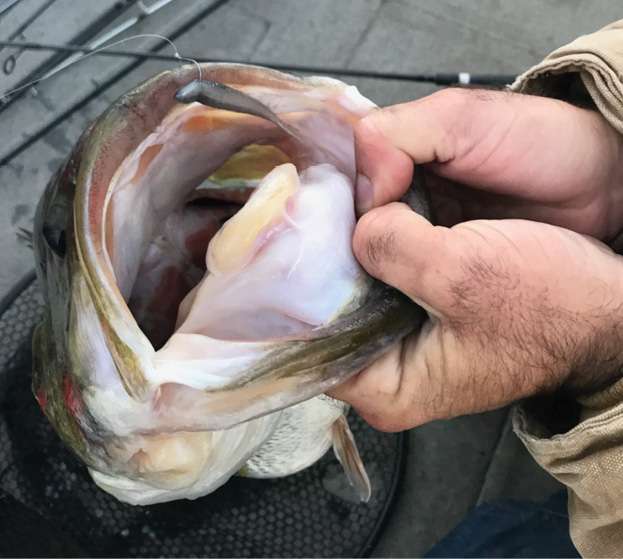
Photo by bassmaster.com
デカバスを釣るための講義、いかがでしたか。
フィッシングガイドのタイプにもいろいろあると思いますが、(お客さんにさせるかどうかは別として)彼はライトラインでのバスフィッシングが得意なようですね。
はじめはパワーフィッシングの話になるのかと思っていましたので、4ポンドラインで15ポンドのバス(約6.8キロ)を釣り上げる話になり、読んでいるだけで緊張してしまいました(笑)
そこから先は細いラインを使うことのメリットだったり魚を掛けた後の対処方法だったりしたので、なるほどなーと思わされることがたくさんありました。
アメリカの記事では細いラインでのここまで詳しい記事はなかなかないので、とても勉強になりました。
しかし、この記事にもありましたが、細いラインにはリスクがつきものです。
この方の釣り方はかなりの経験と実績を持っているため、読んでいると簡単そうに感じますが、実際は相当な冷静さや手の動きがないと即ラインブレイクになる方法だと思います。
細いラインを使っている時のメリットや使いどころ、そしてバスを掛けた後の対処方法は覚えておきつつ、できれば、使うラインは経験を重ねるごとに徐々に細くしていきたいものだと思います。
そうしないとラインブレイクが多発してしまい、いたずらにバスを殺生してしまう原因になったり、環境を悪くする原因になってしまいますからね。
しかし、実際、目標となるデカいバスは釣りたいものです。
この記事ではそのためのアドバイスとしてまず最初に「デカいバスがいるところを見つける」とありましたが、それが一番難しいと思うので(笑)、結局のところいろいろな場所で釣りをして、いろいろ経験して、いろいろ実験して、やっていくしかないような気がします。
さて、次はどこへ行きましょうか。
楽しみですね。
それでは、また。
毎度ありがとうございます!







